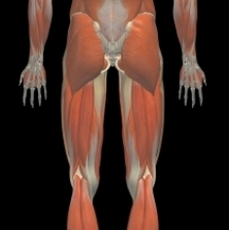Injection of the trigger zone
Description injection trigger zone
Triggernaya area – painful area in a muscle. In the trigger zone can be a sense, availability “node” or area density in the muscle. When a trigger zone applied pressure, pain extends to other areas of the body.
Injection of the trigger zone – prick, which is carried out in this painful point. The injection may contain a long-acting anesthetic, aqueous solution or corticosteroid, to reduce inflammation. Also, sometimes for introduction into the trigger zone is used botulinum toxin injections. Sometimes, the doctor inserts a needle into a trigger zone, without the introduction of drugs. All this is done, to stop the cycle of pain in trigger points.

Reasons for injection into the trigger zone
Injections are performed in the trigger zone, to reduce pain and improve physical function, to have the opportunity to participate in a program of physical therapy.
Possible complications of injections in the trigger zone
Complications are rare, but no procedure does not guarantee the absence of risk. If you plan to injection into the trigger zone, you need to know about possible complications, which may include:
- Soreness, bleeding or bruising at the injection site;
- Infection;
- Dizziness;
- Allergic reactions to local anesthetics or drugs;
- Damage to organs, eg, light (rarely);
- The need for other treatments, If the injection is not effective.
Factors, that may increase the risk of complications:
- Smoking.
They should not be injected into the trigger zone in the following cases:
- Have an allergy to the local anesthetic used in injections or drugs;
- Infection;
- There is a bleeding disorder;
- Pregnancy.
How is the injection into the trigger zone?
Preparation for the procedure
Before the procedure, the doctor may prescribe or perform the following:
- Medical examination and study your medical history;
- Assays (eg, X-ray, MRT);
- Ask about allergy to anesthesia, analgesic or latex.
Consult your doctor about the drugs taken. A week before surgery you may be asked to stop taking some medicines:
- Aspirin and other nonsteroidal anti-inflammatory drugs (eg, Ibuprofen, naproxen);
- Blood-thinning drugs, such as warfarin;
- Antiplatelet drugs, such as clopidogrel.
Depending on the location of trigger points, after treatment, perhaps, You need to arrange home delivery.
Anesthesia
You, usually, the patient will be awake during the procedure. It can be used local anesthesia, to numb the place of injection.
Description of the procedure
First, the skin around the painful area will be cleaned with antiseptic. Next, the doctor will locate the trigger zone. This can be done by pressing the painful area with your fingers. After, as the trigger point is found, fine needle injection is carried painkillers or corticosteroids. If you have multiple trigger points, you may need to perform multiple injections.
Some doctors used rheotachygraphy (DOH), to find the trigger points. With this method,, needle will transmit information to the monitor, allowing the doctor, ensure the correct location of the trigger point.
How long will it take to trigger the injection zone?
The injection takes only a few minutes.
Injection of the trigger zone – Will it hurt?
When the doctor grope trigger zone, can cause discomfort. You'll also feel a burning sensation, when the needle passes through the skin. After the injection, it may be short-term pain.
Care after injection in the trigger zone
Care in a hospital
The hospital staff will put pressure on the injection site, and impose on him a bandage.
You will be observed for a short time, to ensure that no negative reactions to the injection, and then be able to return home or to work.
Nursing homes
When you return home, Follow these steps:, to ensure the normal recovery:
- To reduce the pain, Apply ice or a cold compress to the affected area on 15-20 minutes, four times a day. You can do it in a few days. Wrap the ice in a towel, Do not apply it directly to the skin.
- Take pain medicine as recommended by your doctor. The pain should pass in a few days;
- Follow your doctor's instructions and perform physical therapy exercises. Maybe, you'll have to meet with a physical therapist soon after the injection, to undergo a course of exercises to reduce muscle pain.
Sometimes the pain can be felt for weeks or even months. In some cases, It may require more than one session to trigger the injection zone. Ask the doctor, how often to perform the procedure.
Contact physician after injection in the trigger zone
After returning home, you need to see a doctor, If the following symptoms:
- Signs of infection, including fever and chills;
- Redness, edema, increased pain, bleeding or discharge at the injection site;
- Shortness of breath or chest pain;
- Numbness, pricking, pain or weakness;
- Other painful symptoms.
